04/25/2017: The video highlights F-35s from Hill AFB, Utah, arrive at Royal Air Force Base Lakenheath, England, for a training deployment
And we published an interview from a visit to RAF Lakenheath April 4, 2017 which follows:
During my visit to the United Kingdom in March 2017, I had a chance to visit RAF Lossiemouth, RAF Marham and RAF Lakenheath.
Here the UK is leading the way in shaping a new infrastructure for a 21st century air combat force and with its operational footprint at RAF Lakenheath, the USAF is well positioned to interact with this dynamic of change.
With the RAF and the USAF setting up four squadrons of F-35s between them at two nearby RAF bases, there is a clear opportunity to shape a common sustainment solution.
And the impact of so doing could be significant on the North Sea neighbors, namely, the Danes the Norwegians and the Dutch.
This is clearly a key way ahead in building out NATO capabilities going forward, which provides a 21st century example of burden sharing which delivers relevant capabilities.
http://www.sldforum.com/2016/05/leveraging-the-raf-marham-and-raf-lakenheath-strategic-opportunity/
I discussed this strategic shift last year with the wing commander at RAF Lakenheath. Col., now Brigadier General select, Novotny highlighted the importance of such an effort.
“I see there is great potential for two countries to develop in concert, side-by-side, and to set, set the model for joint operations.
“As we get this right, we can bring in the Danes, the Norwegians and Dutch who are close in geography and the Israelis and Italians as well to shape the evolving joint operational culture and approach.
“Before you know it, you’ve got eight countries flying this airplane seamlessly integrated because of the work that Lakenheath and Marham are doing in the 20 nautical miles radius of the two bases.”
https://www.sldinfo.com/synergy-and-building-out-extended-nato-defense/
During my visit this year, I had a chance to talk with Col. Evan Pettus, the Commander of the 48th Fighter Wing at Royal Air Force Lakenheath, England.
Also, participating in the discussion was Lt. Col. Vause who is the 48th Wing F-35 program integration officer, and whom I met with last year.
Question: Most recently, you came from South Korea certainly an area of strategic interest for the United States. Coming back to Europe, what do you find different than before and analogous in some ways to the situation in the Pacific?
Col. Pettus: I completed my last assignment in Europe in 2012.
The big shift in the interim has been from a primary emphasis on building partnership capacity to improving interoperability and readiness.
In other words, EUCOM’s focus has changed from reassuring allies and partners to deterrence.
Question: So the F-35 is coming at a good time from your point of view?
Col. Pettus: Absolutely.
We do not have a closer partner than the UK.
We will both operate the F-35 from Marham and Lakenheath respectively, which are very close to one another.
Shaping synergy between the two bases is clearly an important objective.
We are working this process in a step by step manner, from understanding how we might operate F-35As from Marham and F-35Bs from Lakenheath, to deeper sustainment and training opportunities as well.
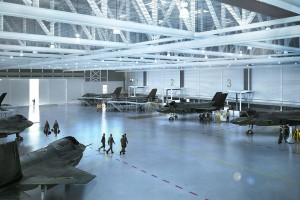 Computer Generated Image of the Maintenance and Finish Facility which is being built at RAF Marham, Norfolk, as part of a programme of works to prepare the station for the arrival of the F-35 Lightning II fleet in 2018.
Computer Generated Image of the Maintenance and Finish Facility which is being built at RAF Marham, Norfolk, as part of a programme of works to prepare the station for the arrival of the F-35 Lightning II fleet in 2018.
We exchange pilots and officers all the time between the USAF and the RAF, and we share a great deal of information.
This provides a lot of opportunities for synergy in training, and opportunities to explore common support concepts for the F-35 as a fleet.
Question: You have working groups addressing these issues, which I discussed the last time I was here.
What is the process currently?
Col. Pettus: The working groups meet about every six weeks, and we are starting simple.
For example, how can we support one another if aircraft from one base divert to the other due to bad weather?
We are looking at basic maintenance support for launch and recovery of aircraft and shaping the proper agreements and the proper procedures to that end.
As we work through that, we can then proceed to other opportunities for operational cooperation.
Right now it’s all pre-decisional.
It’s very exploratory but we are talking about the right things, such as basic maintenance actions to support one another.
Lt. Col. Vause: I know you have written about the FACO in Italy and the kinds of maintenance support, which it could provide for the US and the allies.
We are looking at such possibilities in the UK as well at Marham and other support centers in the UK.
I would anticipate that some of our major level maintenance might be done at allied facilities.
That’s just a different model from what we do today.
Question: One impact of the standing up of an F-35 global enterprise is clearly the opportunity to cross learn.
I assume that is happening with regard to the standup of the F-35s at Lakenheath with regard to lessons learned from Marham and other F-35 bases as well?
Lt. Col. Vause: The cross learning is very important as we stand up our facilities here at Lakenheath.
We are visiting a number of facilities to see what their lessons learned are, and we then apply them directly to our standup here at Lakenheath.
Recently, we visited Yuma, Luke, Hill and Eielson to see what they have done and are doing in setting up or operating their F-35 facilities.
And our pilots at Lakenheath are already flying with the F-35s available in the force.
For example, Lakenheath pilots participated in the recent Red Flag exercise and flew alongside F-35s in the exercise.
So we do not need to wait until our own jets arrive to begin integrating lessons learned.
Col. Pettus: Put simply, we’re trying to leverage the best practices of other bases as we prepare our own.
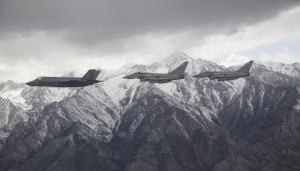 The F-35 Lightning II flew in formation with two Typhoons in April 2014.
The F-35 Lightning II flew in formation with two Typhoons in April 2014.
And of course, the experience, which you saw at Marham, is directly relevant. For example, when standing up Marham, the RAF had to look at modifications to their power grid.
Their experience alerted us to examine our own power situation, and we quickly learned we needed more capacity to beddown the F-35.
We would’ve gotten there eventually through the planning process, but we got there faster because we were talking to Marham.
Given our deterrence focus, getting their faster matters.
In short, our efforts to lay out the base is highly informed by lessons learned from other F-35 facilities.
Lt. Col. Vause: It is really nice to be able to follow the path of trailblazers and to leverage their real world operational experiences.
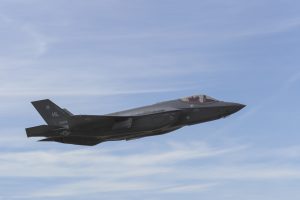 A United States Air Force (USAF) F-35A Lightning II (also known as the Joint Strike Fighter) climbs from the runway at Nellis Air Force Base during Exercise Red Flag 17-1. Credit: Royal Australian Air Force
A United States Air Force (USAF) F-35A Lightning II (also known as the Joint Strike Fighter) climbs from the runway at Nellis Air Force Base during Exercise Red Flag 17-1. Credit: Royal Australian Air Force
And I would like to emphasize that the F-35 is active now and having impacts on Air Force and allied thinking from the outset.
When you were last here, it seemed that the F-35 was coming but had not landed.
Now it’s in the combat force and our pilots are getting the point of the significant impact it has.
They now understand that the challenge for legacy is to work with the F-35, and is not simply to operate as they have done in the past.
This is the challenge which needs to be met.
Flying with the RAF and its Typhoons and F-35s, or our F-15s with the F-35s, will be about shaping new integrated air combat capabilities.
Col. Pettus: The latest Red Flag is a case in point.
We are working hard on transforming the force.
Editor’s Note: For an interview last year with the team working on the infrastructure at RAF Lakenheath, see the following:
https://www.sldinfo.com/building-a-21st-century-base-at-raf-lakenheath-a-fifth-generation-infrastructure-for-a-fifth-generation-enabled-force/
Biography of Col. Evan Pettus
Col. Evan L. Pettus is the Commander of the 48th Fighter Wing at Royal Air Force Lakenheath, England, the only wing in the Air Force with an official name, the “Statue of Liberty Wing.”
The Liberty Wing consists of approximately 4,500 active-duty personnel and over 1,000 British and U.S. civilians. The wing includes a geographically-separated unit at nearby RAF Feltwell.
The wing employs three combat-ready squadrons of F-15E Strike Eagle and F-15C Eagle fighter aircraft, as well as a squadron of HH-60G Pave Hawk Combat Search and Rescue helicopters and a squadron of Guardian Angel pararescuemen.
Prior to assuming his current position, Col. Pettus was the Deputy Assistant Chief of Staff, Operations, U.S. Forces Korea, where he helped direct and plan current and future operations for Airmen, Soldiers, Sailors and Marines serving on the Korean peninsula.
Before serving in Korea, Col. Pettus was the Vice Commander, 4th Fighter Wing, Seymour Johnson Air Force Base, N.C. He earned his wings upon graduating from Euro-NATO Joint Jet Pilot Training at Sheppard AFB, Texas, and was first stationed at RAF Lakenheath as an F-15E pilot.
Col. Pettus received his commission from the U.S. Air Force Academy in 1994. He is a graduate of the U.S. Air Force Weapons School and is a command pilot with more than 2,500 hours in the T-37, T-38, AT-38 and F-15E. He has flown combat missions in operations Northern Watch, Southern Watch, Allied Force, Enduring Freedom, and Iraqi Freedom.
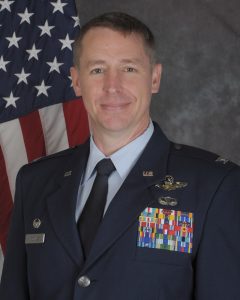 Col. Evan Pettus, the Commander of the 48th Fighter Wing at Royal Air Force Lakenheath, England.
Col. Evan Pettus, the Commander of the 48th Fighter Wing at Royal Air Force Lakenheath, England.
EDUCATION
1994 Bachelor of Science degree in aeronautical engineering, U.S. Air Force Academy, Colo.
2000 Squadron Officer School, Maxwell AFB, Ala.
2004 Master’s degree in business administration, Bellevue University, Neb.
2004 F-15E Weapons Instructor Course, Nellis AFB, Nev.
2005 Air Command and Staff College, by correspondence
2008 Master’s degree in logistics sciences, Air Force Institute of Technology, Ohio
2008 Air War College, by correspondence
2013 Master’s degree in strategic studies, Air War College, Maxwell AFB, Ala.
ASSIGNMENTS
- August 1994 – October 1995, student, Euro-NATO Joint Jet Pilot Training, Sheppard AFB, Texas
- October 1995 – April 1996, student, Introduction to Fighter Fundamentals, Sheppard AFB, Texas
- April 1996 – December 1996, student, F-15E Formal Training Unit, 334th Fighter Squadron, Seymour Johnson AFB, N.C.
- December 1996 – January 2000, F-15E pilot, mission planning officer and assistant chief of training, 492nd Fighter Squadron, RAF Lakenheath, England
- January 2000 – January 2002, air liaison officer, 1st Brigade, 1st Armored Division, Friedberg Army Installation, Germany
- January 2002 – July 2004, F-15E instructor pilot, flight commander, 391st Fighter Squadron, Mountain Home AFB, Idaho
- July 2004 – December 2004, student, F-15E Weapons Instructor Course, Nellis AFB, Nev.
- December 2004 – August 2005, Chief of Wing Combat Training, 366th Operations Support Squadron, Mountain Home AFB, Idaho
- August 2005 – March 2006, Chief of Wing Weapons and Tactics, 3rd Operations Support Squadron, Elmendorf AFB, Alaska
- March 2006 – April 2007, Director of Operations, 90th Fighter Squadron, Elmendorf AFB, Alaska
- April 2007 – August 2008, student, Air Force Institute of Technology, Ohio
- August 2008 – February 2009, Assistant Director of Operations, 366th Operations Support Squadron, Mountain Home AFB, Idaho
- February 2009 – July 2009, Director of Operations, 391st Fighter Squadron, Mountain Home AFB, Idaho
- August 2009 – January 2011, Commander, 389th Fighter Squadron, Mountain Home AFB, Idaho
- March 2011 – June 2012, Chief, Commander’s Action Group, U.S. Air Forces in Europe, Ramstein Air Base, Germany
- July 2012 – May 2013, student, Air War College, Maxwell AFB, Ala.
- August 2013 – June 2014, Vice Commander, 4th Fighter Wing, Seymour Johnson AFB, N.C.
- July 2014 – July 2016, Deputy Assistant Chief of Staff, Operations, U.S. Forces Korea
- July 2016 – present, Commander, 48th Fighter Wing, RAF Lakenheath, England
FLIGHT INFORMATION
Rating: command pilot
Flight hours: more than 2,500
Aircraft flown: T-37, T-38, AT-38, F-15E
Editor’s Note: In a story published on January 9, 2017 in Stars and Stripes, William Howard described the renovations at RAF Lakenheath:
Work on remodeling a central compound is expected to begin soon at RAF Lakenheath for the F-35 Joint Strike Fighters slated to begin arriving in 2021.
The U.S. Air Force in January 2015 announced RAF Lakenheath as its first base for the F-35 in Europe. The two squadrons of 54 F-35s will operate alongside two squadrons of F-15E Strike Eagles and a single unit of F-15Cs currently based there.
“We’re on track to bed down the F-35 here in the United Kingdom,” Col. Evan L. Pettus, commander of the 48th Fighter Wing at RAF Lakenheath told Stars and Stripes Monday.
“RAF Lakenheath offers a combination of several advantages: We have close partnerships with the United Kingdom who will also be operating the F-35, we have fighter jet experience, we have the room and a good training space.”
While the current airfield won’t be altered, new construction is planned for a squadron operations and maintenance facility and an F-35 training simulator. Some of the ramps will be extended and existing support facilities are receiving upgrades.
The new facilities are designed not only for the incoming F-35s but also the 1,200 airmen who will accompany them.
Missions will continue as normal even after construction crews break ground, Pettus said.
“Current operations continue unabated,” he said. “We are capable as construction begins of manipulating our flow on the airfield so we’ll be able to train and maintain our readiness without interruption.”
The slideshow highlights the arrival of the F-35s at RAF Lakenheath and the photos are credited to the USAF.
ROYAL AIR FORCE BASE LAKENHEATH, UNITED KINGDOM
04.17.2017
Video by David Fitzroy
Defense Media Activity – Air Force


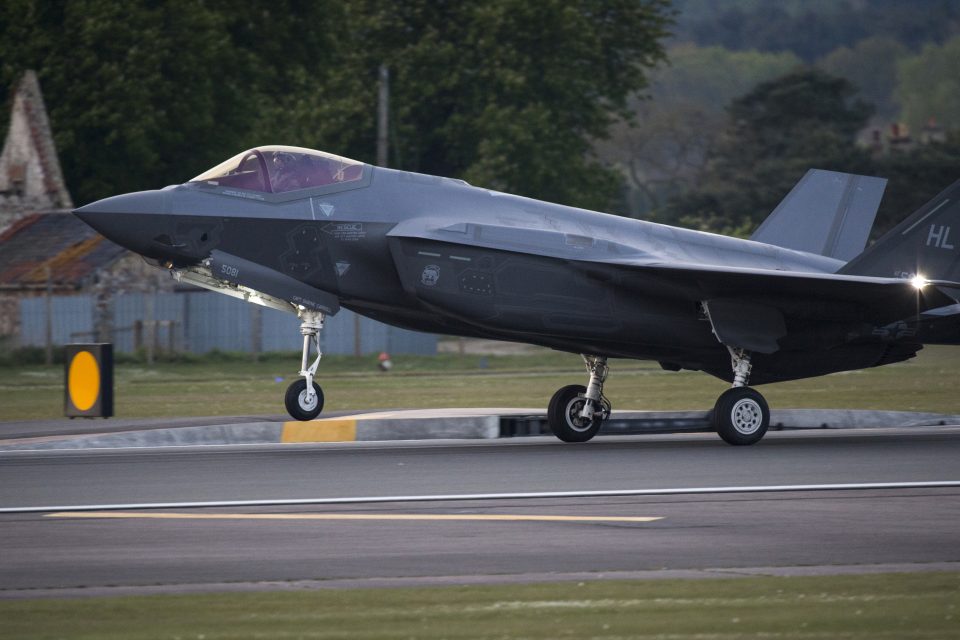
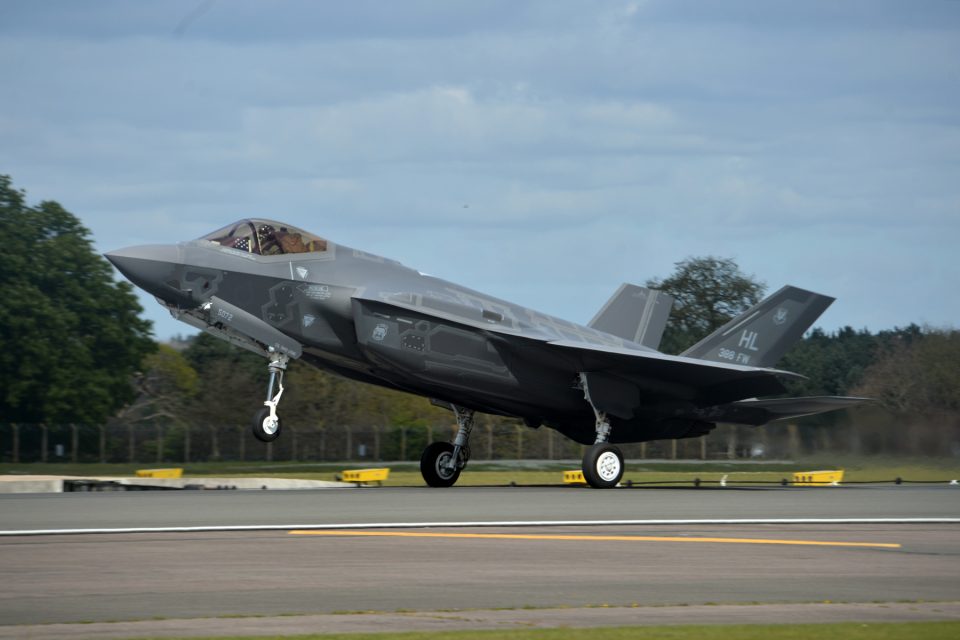
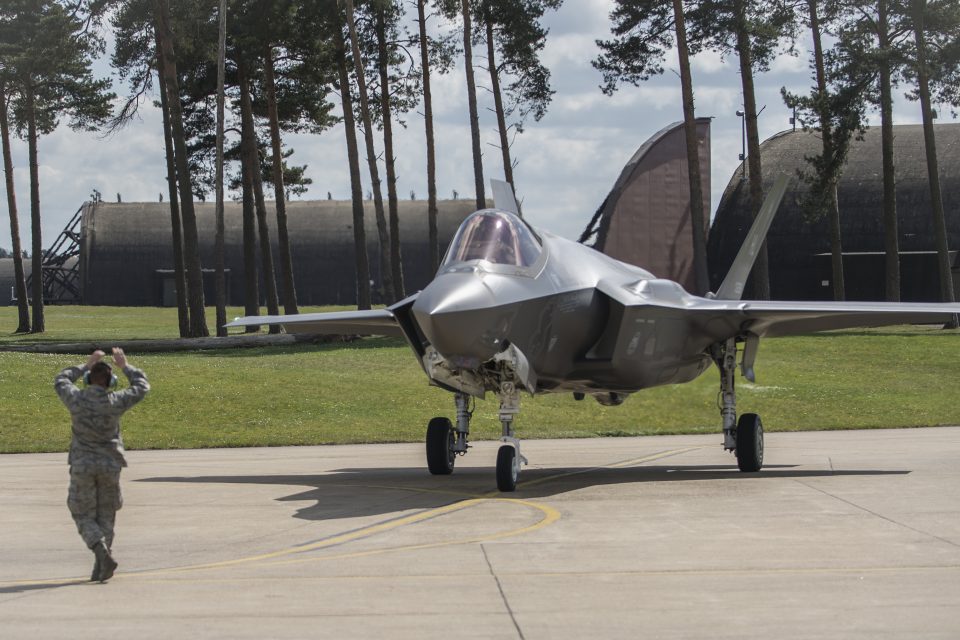

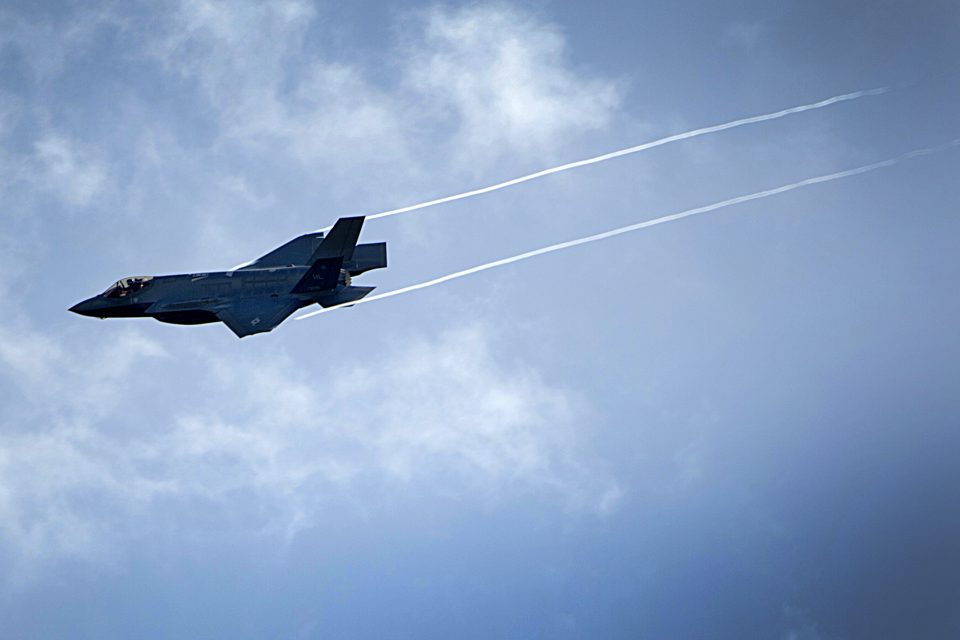
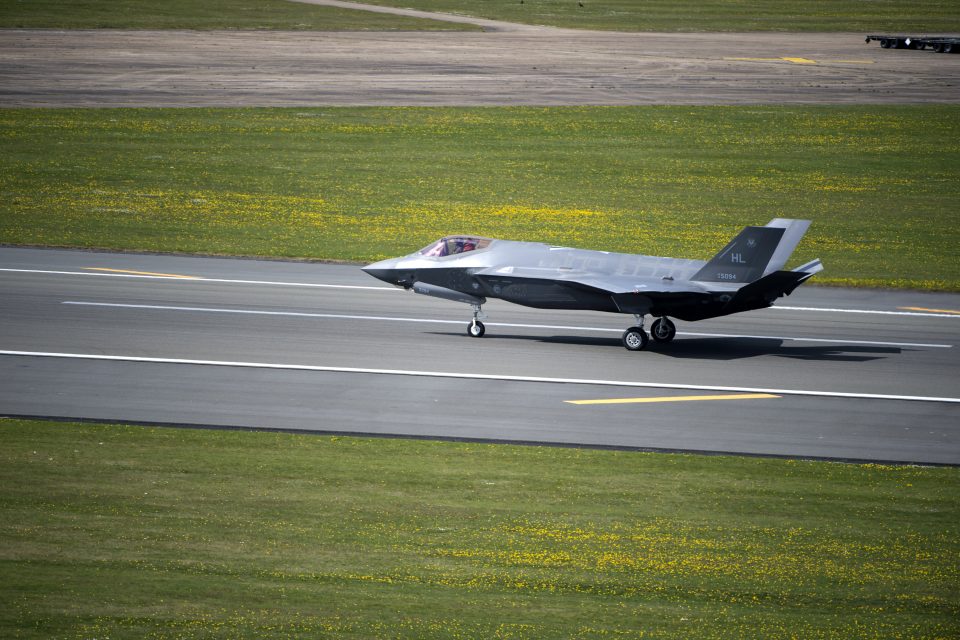
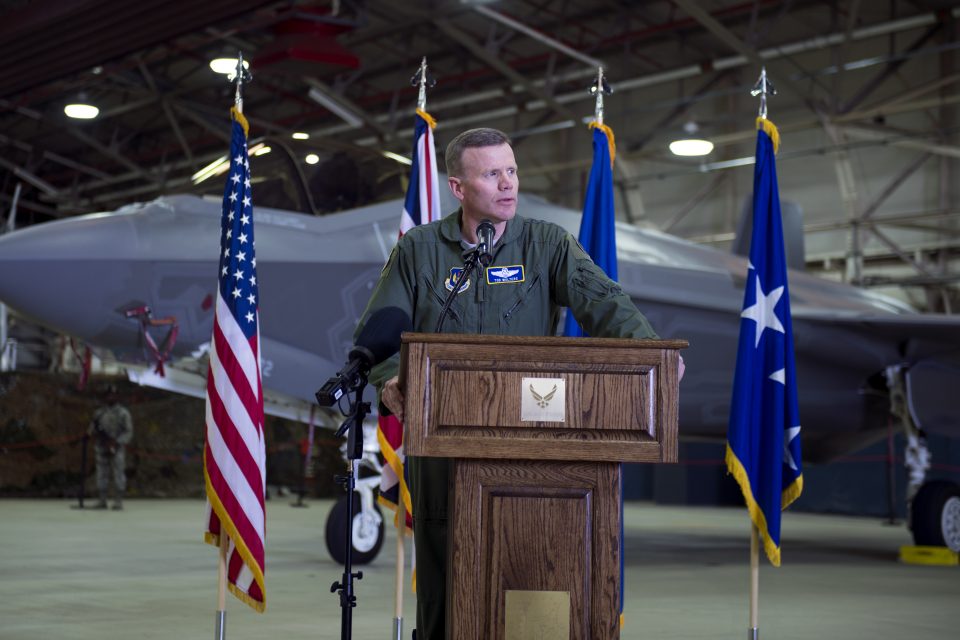
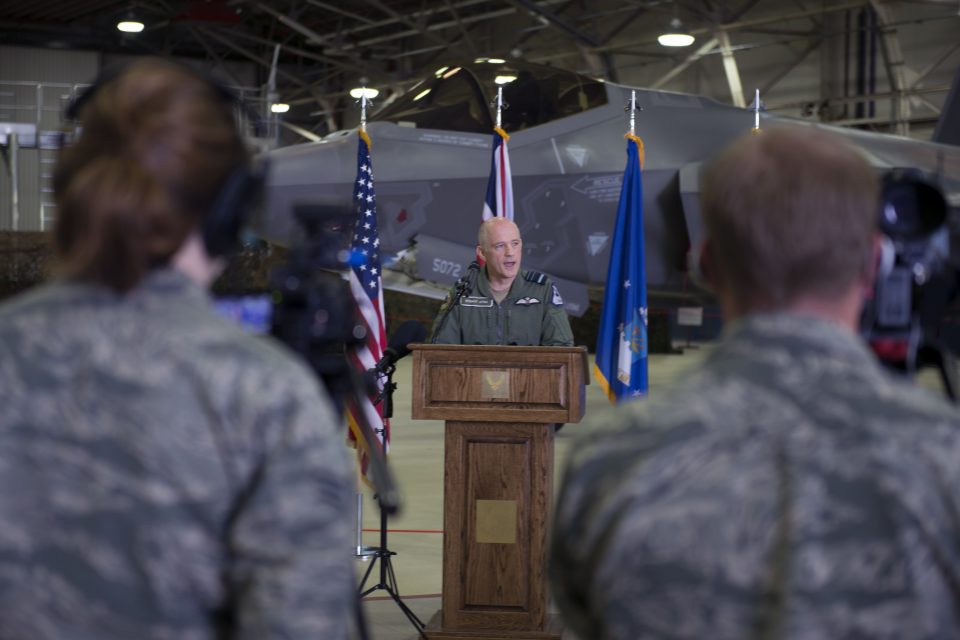
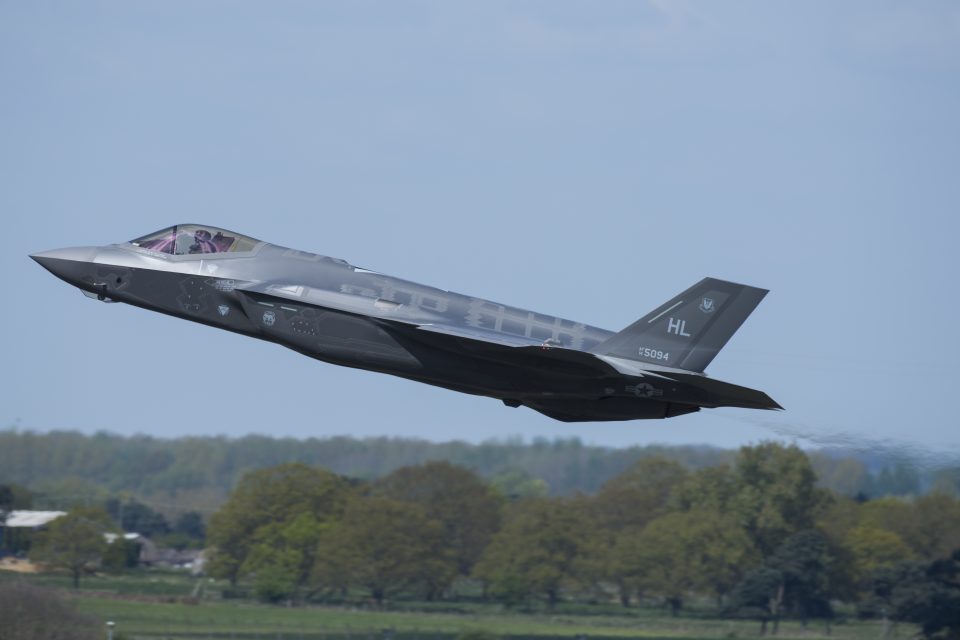
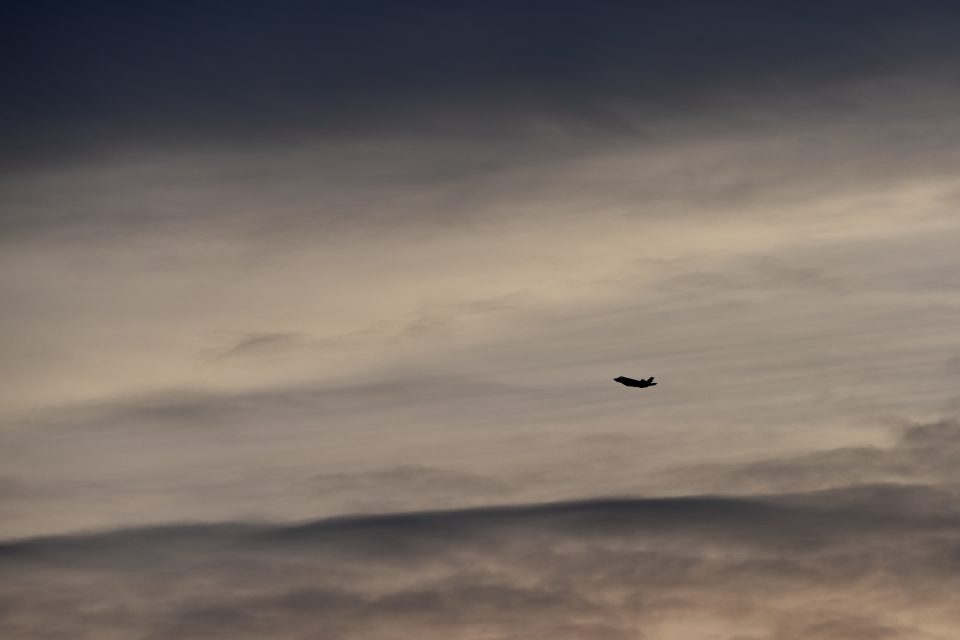
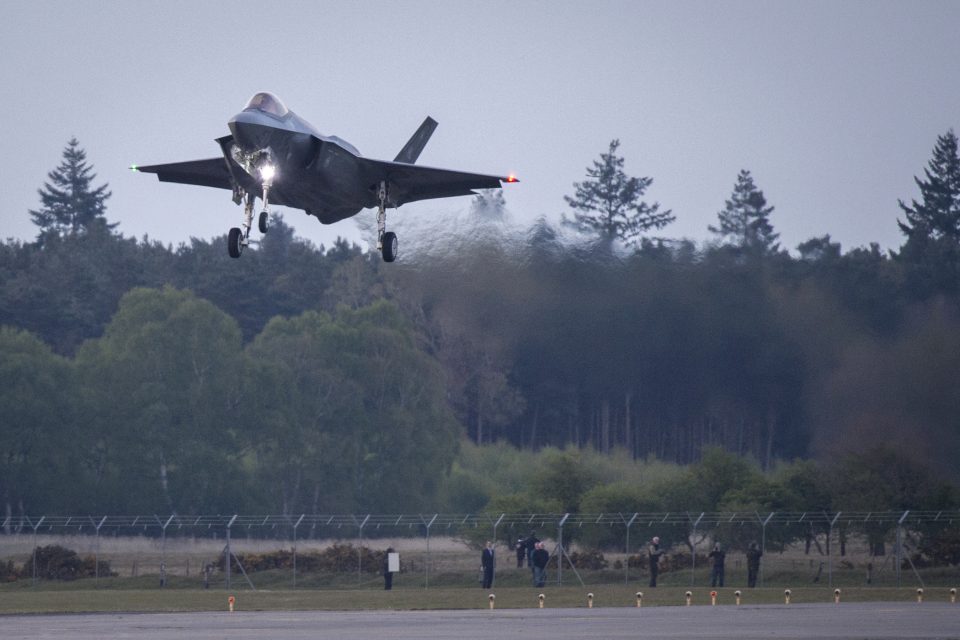

 Computer Generated Image of the Maintenance and Finish Facility which is being built at RAF Marham, Norfolk, as part of a programme of works to prepare the station for the arrival of the F-35 Lightning II fleet in 2018.
Computer Generated Image of the Maintenance and Finish Facility which is being built at RAF Marham, Norfolk, as part of a programme of works to prepare the station for the arrival of the F-35 Lightning II fleet in 2018. The F-35 Lightning II flew in formation with two Typhoons in April 2014.
The F-35 Lightning II flew in formation with two Typhoons in April 2014. A United States Air Force (USAF) F-35A Lightning II (also known as the Joint Strike Fighter) climbs from the runway at Nellis Air Force Base during Exercise Red Flag 17-1. Credit: Royal Australian Air Force
A United States Air Force (USAF) F-35A Lightning II (also known as the Joint Strike Fighter) climbs from the runway at Nellis Air Force Base during Exercise Red Flag 17-1. Credit: Royal Australian Air Force Col. Evan Pettus, the Commander of the 48th Fighter Wing at Royal Air Force Lakenheath, England.
Col. Evan Pettus, the Commander of the 48th Fighter Wing at Royal Air Force Lakenheath, England.